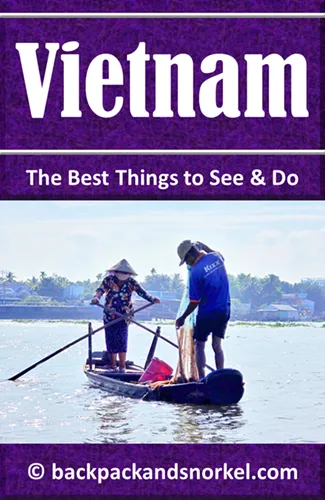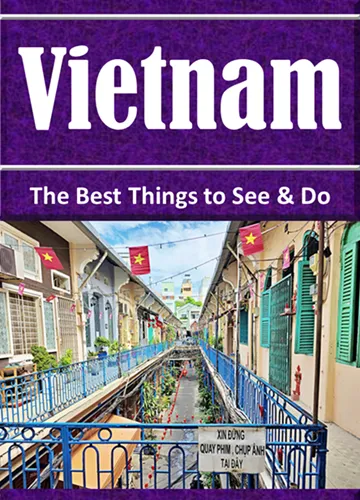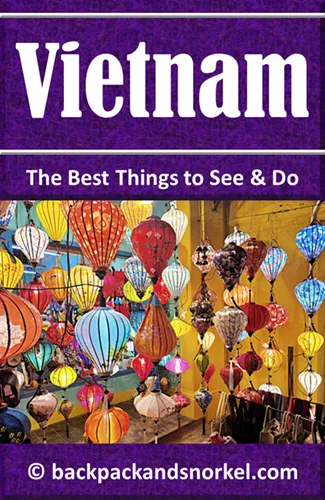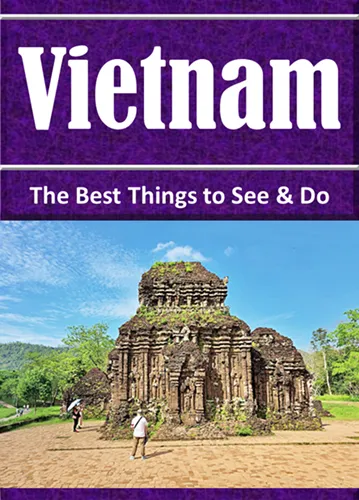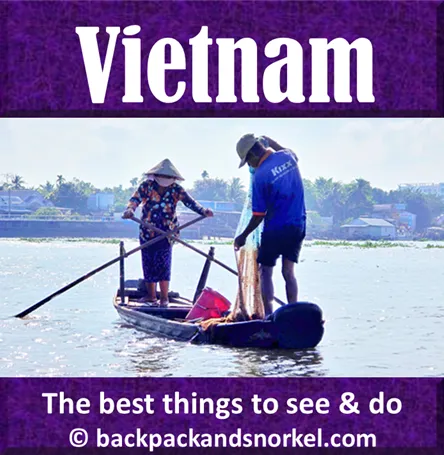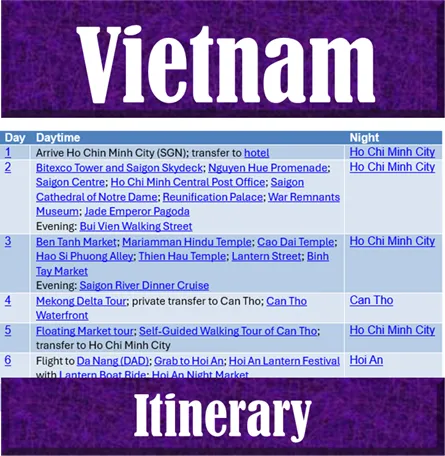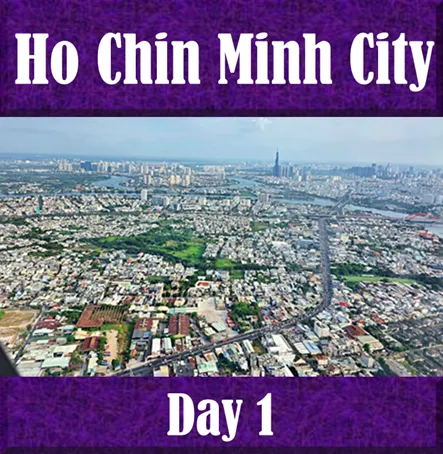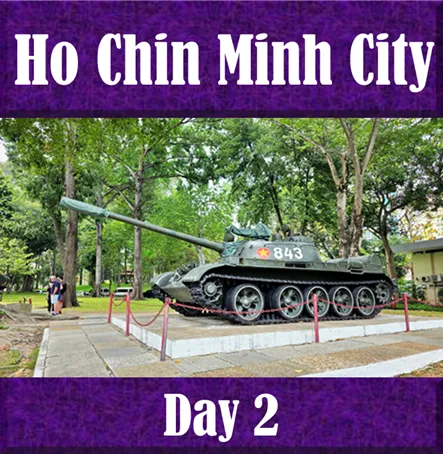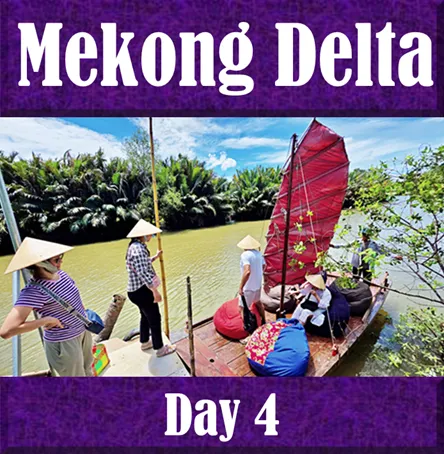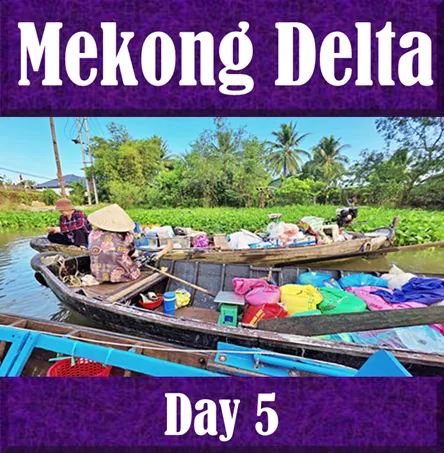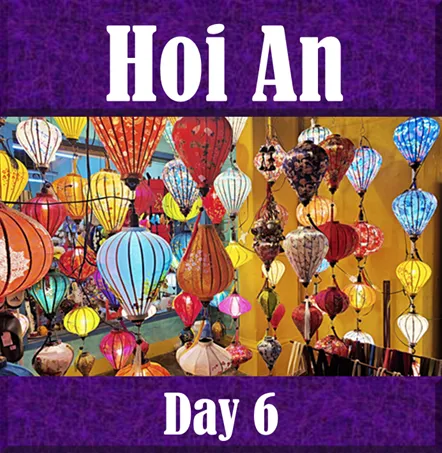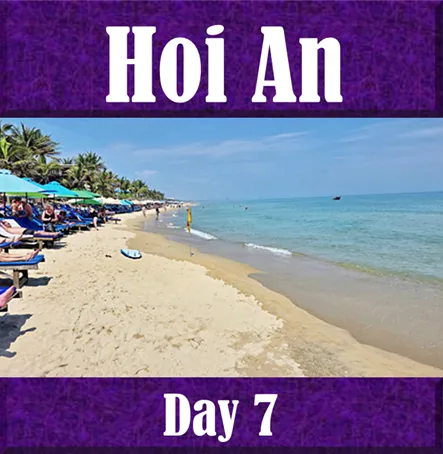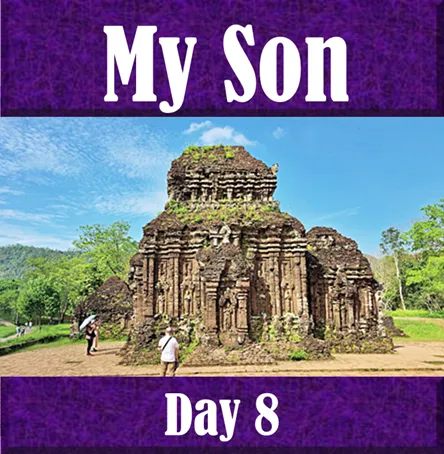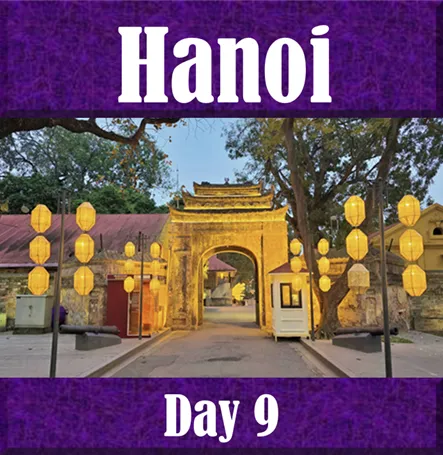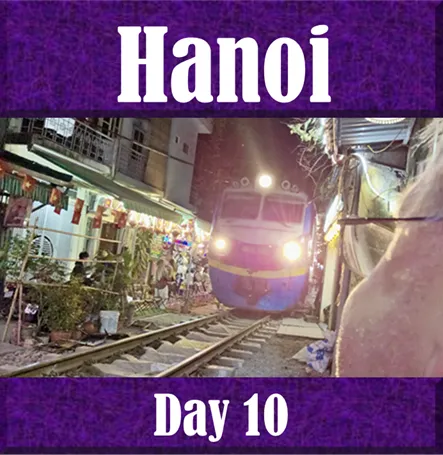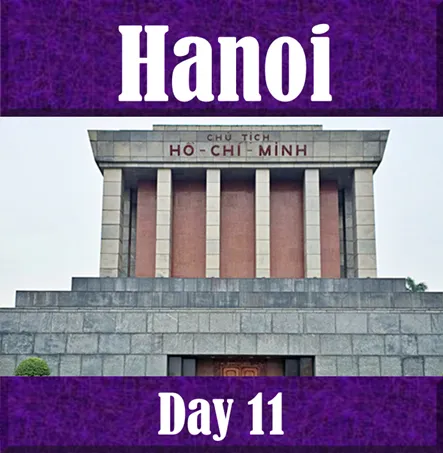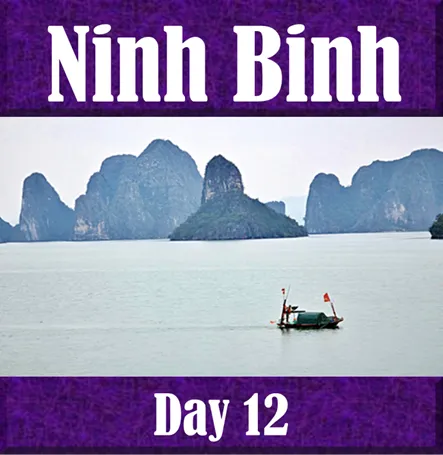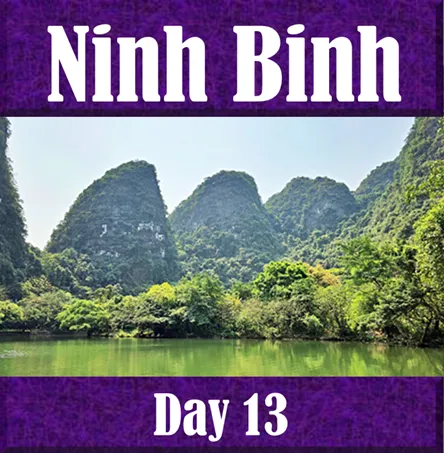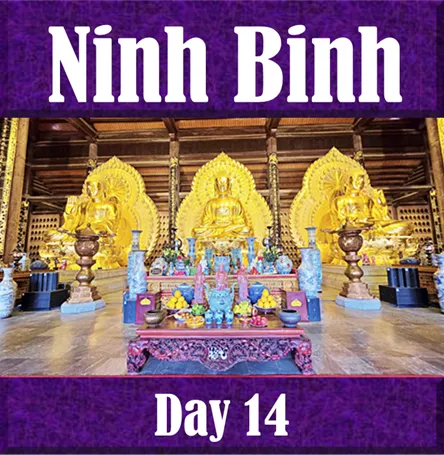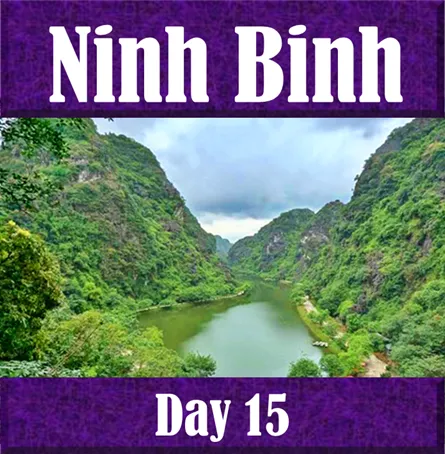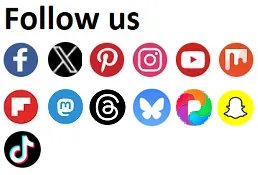Complete Vietnam Travel Guide: Explore Hanoi, Hoi An, Mekong Delta & More | Vietnam Purple Travel Guide
Welcome to Vietnam, a country that captures the imagination with its stunning natural landscapes, rich history, and vibrant culture. From the chaotic, yet captivating, energy of Ho Chi Minh City to the ancient lantern-lit streets of Hoi An and the tranquil limestone karsts of Lan Ha Bay, Vietnam offers a diverse and unforgettable journey. Prepare to wander through bustling street markets, navigate serene waterways in the Mekong Delta, trek through breathtaking rice paddies in Ninh Binh, and immerse yourself in a world where ancient traditions exist side-by-side with modern life. This guide is your key to unlocking the very best of Vietnam, from its legendary pho and friendly people to its hidden gems and iconic landmarks.
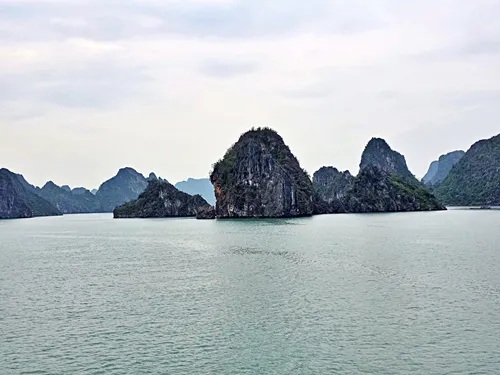
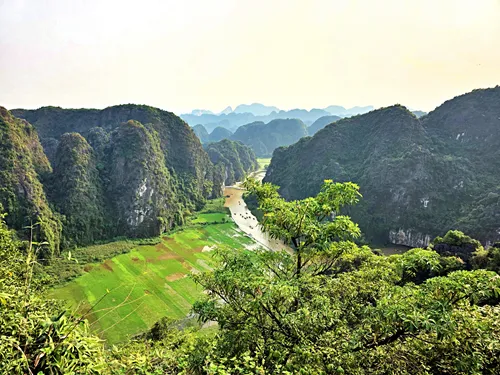
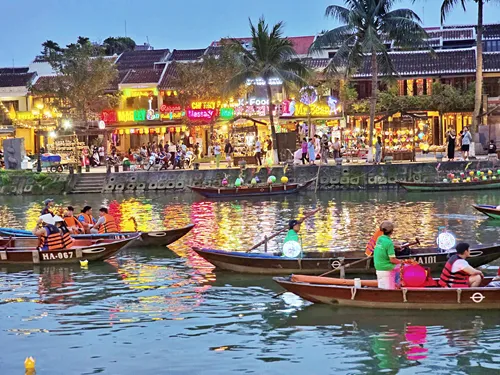
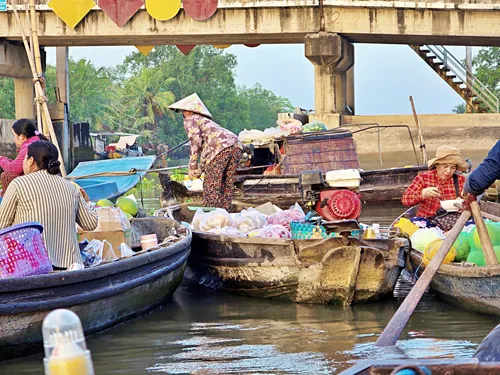
Why you should visit Vietnam
Vietnam is fantastic travel destination, and it is getting more popular by the year. Regardless if you are drawn to bustling cities, peaceful countryside, or dramatic coastal landscapes, Vietnam with its unique blend of ancient traditions, resilient spirit, and stunning natural beauty, delivers a rich and rewarding travel experience for every traveler. The country stretches over 1,000 miles (1600 km) from north to south, and each region brings its own character, flavors, weather, and stories. A journey through places like Ho Chi Minh City, the Mekong Delta, Hoi An, Hanoi, Ninh Binh, and Lan Ha Bay near Ha Long Bay offers a powerful glimpse into the country’s depth and diversity.
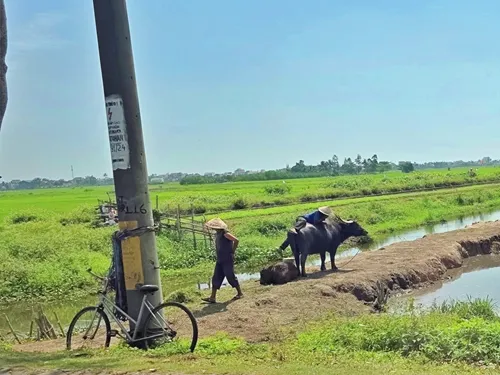
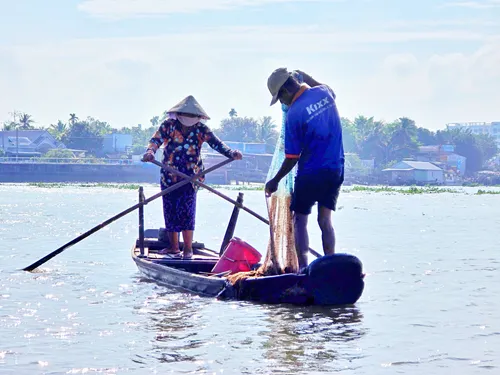
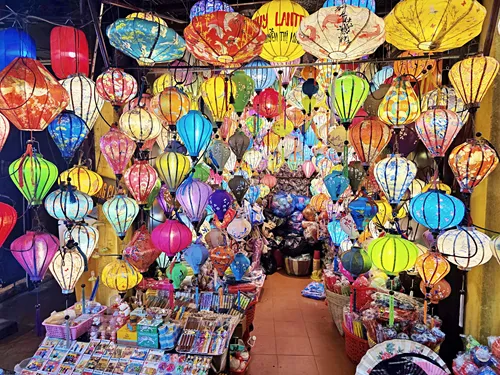
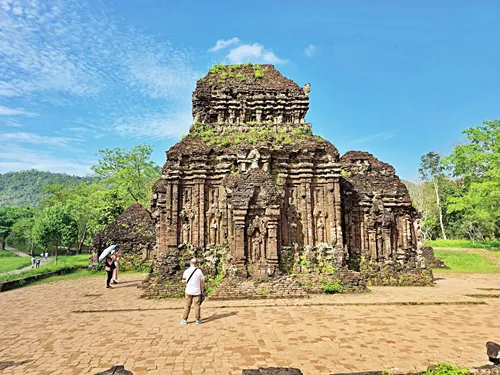
Ho Chi Minh City, formerly Saigon, is often the first stop for travelers arriving in the south. It is a place where history and modernity collide in the most energetic way possible. Towering skyscrapers and neon-lit cafes sit next to colonial-era buildings and centuries-old pagodas. The city pulses with life, from the constant flow of scooters weaving through traffic to the aroma of street food stalls offering banh mi and freshly brewed Vietnamese coffee. Despite its rapid development, Ho Chi Minh City still holds onto its past, especially in sites like the War Remnants Museum or the Reunification Palace, which offer sobering and insightful perspectives on Vietnam’s 20th-century history.
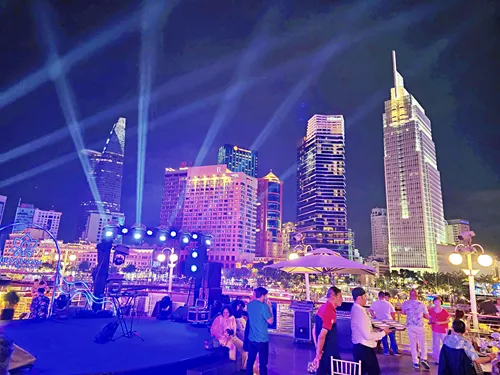
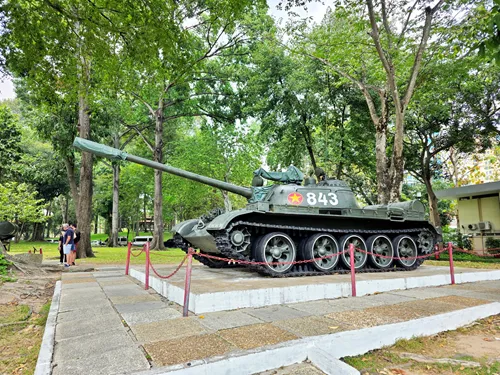
A few hours southwest lies the Mekong Delta, a world away from the city’s chaos. The region has a lush, watery landscape where rivers replace roads and boats serve as daily transport. In towns like Ben Tre and Can Tho, visitors can float through palm-shaded canals, visit vibrant floating markets, and get a feel for rural Vietnamese life that remains closely tied to the rhythm of the river.
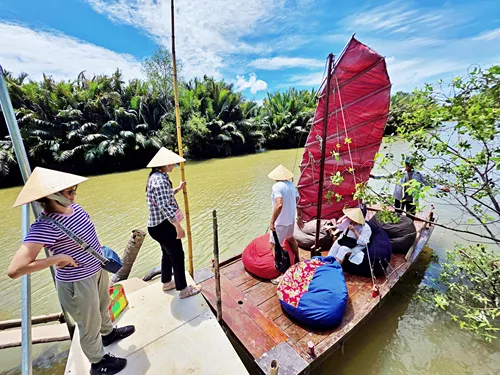
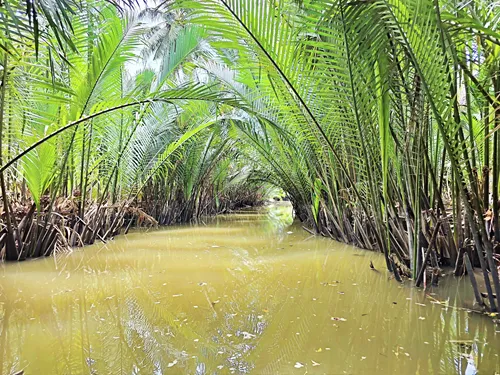
Moving north to Hoi An, the atmosphere shifts again. This town’s ancient downtown area feels almost frozen in time, with its lantern-lined streets, well-preserved architecture, and riverside setting. Once a bustling trading port, Hoi An now welcomes visitors with its relaxed pace, artistic charm, and culinary richness. It is a place where you can wander without a plan, or simply watch the lanterns glow after sunset. Hoi An is the epicenter of the colorful Lantern Festival in Vietnam – do not miss this. Nearby beaches and the ruins of My Son add even more layers to the experience.
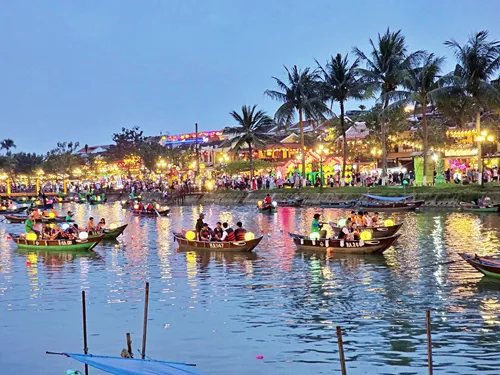
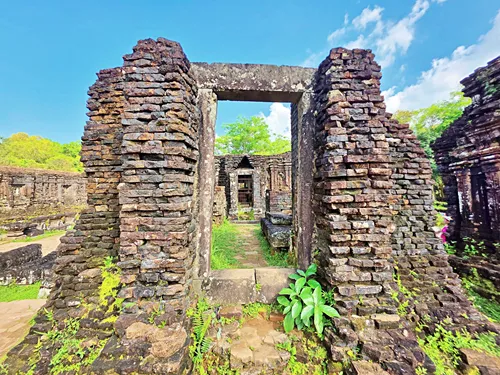
Then comes Hanoi, the capital and cultural heart of the country. Hanoi offers a different kind of energy: less commercial than Ho Chi Minh City, but equally alive. While the Old Quarter with its elegant French colonial buildings, and the tranquil Hoan Kiem Lake are rightfully the city’s main tourist draws, over the years, Hanoi’s very instagrammable Train Street and Long Bien Bridge have become tourist magnets, too.
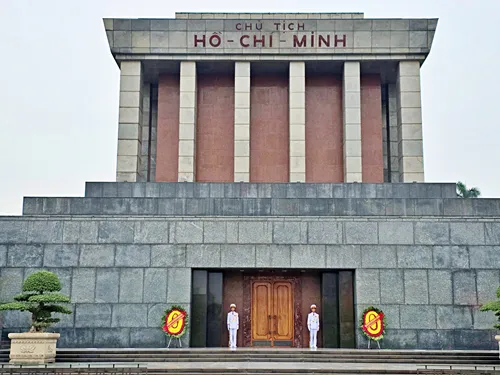
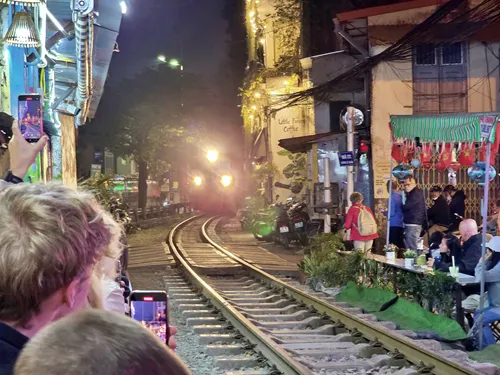
Just east of Hanoi is Lan Ha Bay, the quieter cousin of the more famous Ha Long Bay. With the same surreal limestone formations and emerald waters, Lan Ha offers all the beauty without the crowds. It is the kind of place that begs to be explored by boat. It is a peaceful and awe-inspiring highlight to any journey through Vietnam.
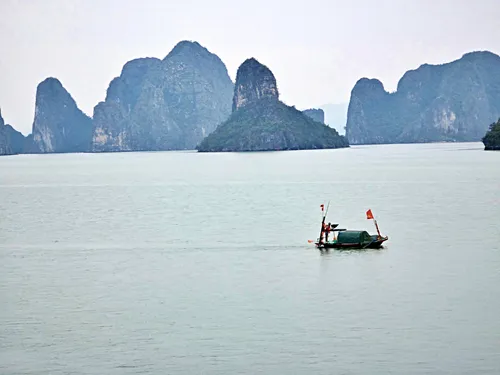
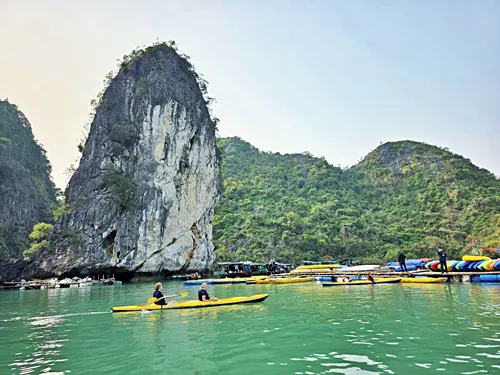
Finally there is Ninh Binh, sometimes called ‘the Halong Bay on land’, though that comparison does not do it full justice. Towering limestone karsts rise dramatically from lush rice paddies and winding rivers. The region offers some of the most cinematic scenery in Vietnam, with highlights like the Trang An grottoes, the ancient capital of Hoa Lu, and peaceful Bich Dong Pagoda tucked into a hillside. Ninh Binh is quieter and more rural than many other stops, and that is part of its magic: it gives travelers the chance to slow down and take in the landscape in a more personal way.
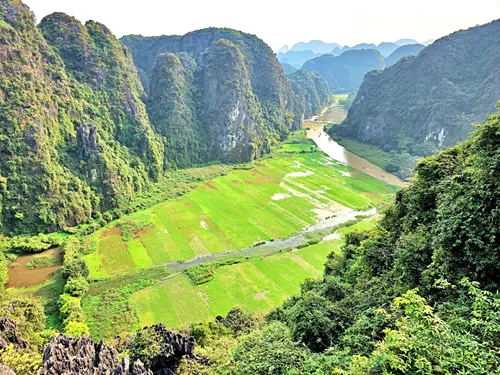
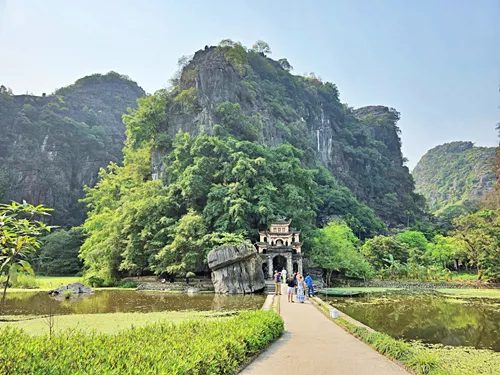
Each of these destinations reveals a different side of the country, and together they create a mosaic of unforgettable experiences. Whether you are in the middle of a crowded market or gliding through a quiet bay, Vietnam invites you to engage, reflect, and connect. It is not just a place you visit – it is a place that stays with you. We love Vietnam.
Please also check out the other exciting destinations and travel guides on our Backpack and Snorkel website.
Visa Requirements for Vietnam
Visa requirements for Vietnam vary depending on your nationality. Many travelers can apply for an e-visa online, which is valid for 90 days and allows for single or multiple entries. Countries such as the United States, Canada, the UK, Australia, and most EU nations are eligible for the e-visa system.
Vietnam also offers visa exemptions for citizens of certain countries, including some ASEAN members and a few European nations, for stays ranging from 14 to 45 days. Travelers entering by air can sometimes obtain a visa on arrival, but this usually requires a pre-approval letter and is only valid at select airports.
It is important to check the latest requirements on the official Vietnam immigration website or consult with your local Vietnamese embassy before traveling.
Here are resources that you should check:
Vietnam National Electronic Visa system website
This is Premium Content! To access it, please download our
Backpack and Snorkel Purple Travel GuideiVisa
This is Premium Content! To access it, please download our
Backpack and Snorkel Purple Travel Guide
Extremely Important: You will be turned away at the border if there is a typo or any mistake in your visa. Therefore, please double- and triple check the information you enter and the visa that is issued to you. If there is any mistake, apply for a new visa.
Currency and Money Matters in Vietnam
Vietnam's official currency is the Vietnamese đồng (VND). While the exchange rate fluctuates, one US dollar typically converts to around 24,000 VND.
Here, you can check the current exchange rate.
Common denominations include 10,000, 20,000, 50,000, 100,000, 200,000, and 500,000 VND banknotes. There are no coins anymore.
Cash is by far the most widely accepted form of payment, especially in markets, rural areas, and small businesses. In cities and tourist hotspots, credit and debit cards are increasingly accepted at hotels, upscale restaurants, and larger stores.
You will find that some vendors who accept credit cards add an extra charge between 2-5% to credit card payments.
ATMs are widely available. They often charge withdrawal fees in the range of 20.000 and 50.000 VND. The daily withdrawal limit depends on the bank, but is typically between 2 and 10 million VND.
It is highly advisable to always carry some cash, particularly in smaller towns or during day trips, but also in bigger cities.
When exchanging money, use authorized money changers or banks to avoid scams. Always count your money carefully, as some denominations look similar and can be confusing to new travelers.
Climate and Best Time to Visit Vietnam
Vietnam has a tropical to subtropical climate, and due to its north-south expansion of over 1,000 miles (1600 km), it experiences a range of weather patterns depending on the region. You can have snow in the north and a heat wave in the south at the same time.
Northern Vietnam has four distinct seasons, including chilly winters from December to February and hot, humid summers from May to August.
Central Vietnam is typically hot and dry from January to August but sees heavy rains from September to December. In recent years, heavy rains and flooding have been reported at around June.
Southern Vietnam is consistently warm and humid, with a wet season from May to October and a dry season from November to April.
The best time to visit Vietnam depends on where you are going.
For Northern Vietnam, spring (March to April) and fall (September to November) offer mild weather and clear skies.
Central Vietnam is ideal in the early months of the year, while Southern Vietnam is most pleasant during its dry season from December to April.
Planning your trip according to the regional climate will ensure a more comfortable and enjoyable experience.
If you plan to visit the whole country, then March is often a sweet spot. March sees warm climate in Southern Vietnam, warm and dry conditions in Central Vietnam, and comfortable weather in Northern Vietnam.
Here is the climate that you can expect in Hanoi:
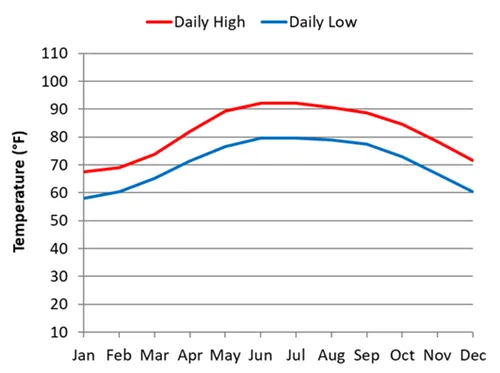
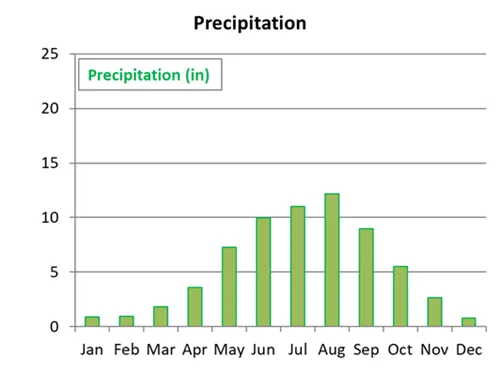
Here is the climate that you can expect in Lan Ha Bay:
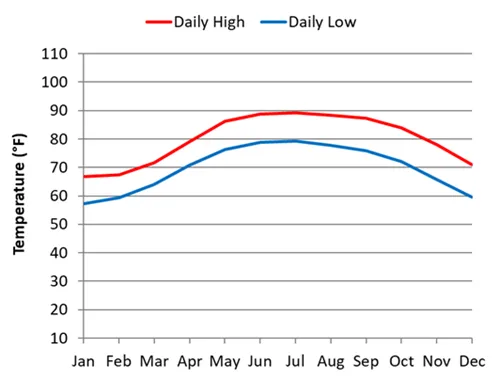
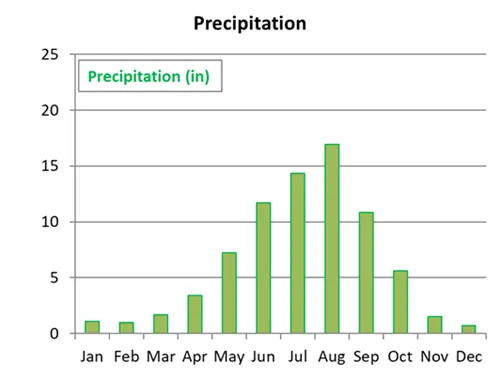
Here is the climate that you can expect in Ninh Binh:
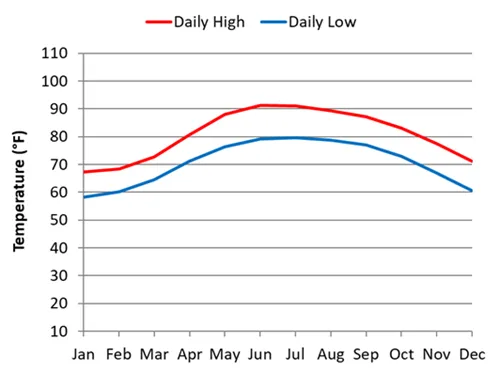
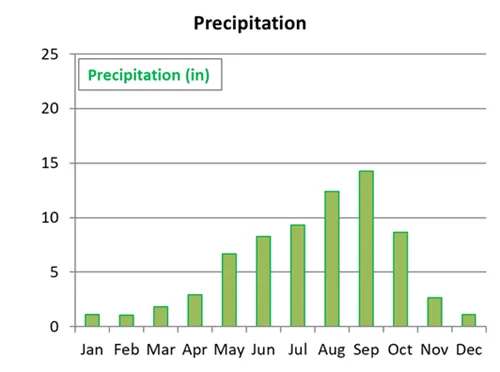
Here is the climate that you can expect in Da Nang and Hoi An:
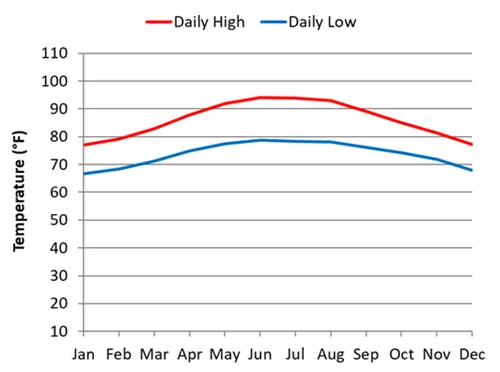
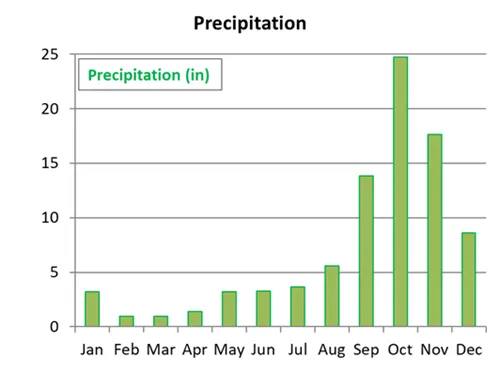
Here is the climate that you can expect in Hanoi:
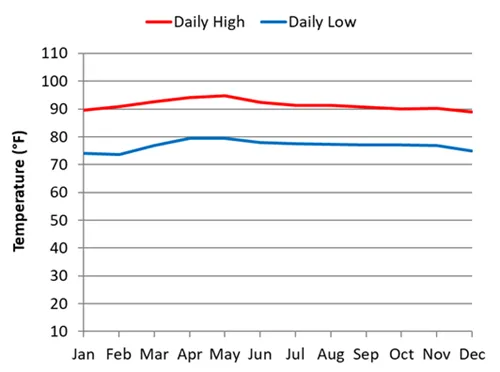
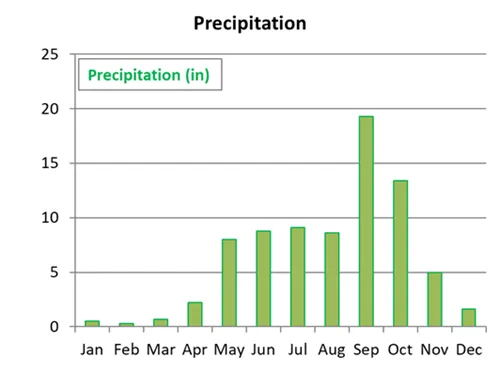
Health and Safety in Vietnam
Vietnam is generally a safe country for travelers, with low rates of violent crime. However, petty theft, such as pickpocketing or bag snatching, can occur in crowded areas, so remain vigilant.
Before traveling, consult your doctor about recommended vaccinations such as hepatitis A and B, typhoid, and tetanus.
Tap water is never safe to drink, so stick to bottled or filtered water.
Be cautious with street food: choose busy stalls where food is freshly prepared and only order hot food.
We once got sick for 2 days after eating at a higher-class Japanese restaurant in Hanoi. Later found out from TripAdvisor that the same thing had happened to others too after eating in this restaurant. If you can, check out TripAdvisor for reviews and do not go if others have reported getting sick.
But do not panic – we never checked TripAdvisor or other restaurant reviews, and we had fantastic food from numerous street vendors and restaurants.
Therefore: Always be prepared and pack medicine that helps against food poisoning.
Consult with your doctor if any of the following are right for you:
Anti-diarrheal medication:
Loperamide (Imodium A-D): This is a common and effective medication for reducing the frequency of bowel movements. It works by slowing down the movement of your gut.
Important Note: Do not use loperamide if you have a fever or bloody diarrhea, as this could indicate a more severe infection that needs medical attention. It is generally not recommended for children under 12 without consulting a doctor.
Bismuth Subsalicylate (Pepto-Bismol, Kaopectate): This medication can help with both diarrhea and an upset stomach, and it has some antimicrobial properties.
Important Note: It is not recommended for children, pregnant women, or people with aspirin allergies due to its salicylate content. It can also cause a harmless temporary darkening of the tongue and stool.
Oral Rehydration Solutions (ORS):
Packets or tablets: These are crucial for preventing and treating dehydration, which is the most dangerous complication of diarrhea and vomiting. ORS contain the correct balance of salts and sugars to help your body absorb fluids effectively. Brands like Pedialyte or WHO-ORS are good examples.
Why they are important: Water alone is not enough to replace lost electrolytes. ORS are specifically designed for this. You can also look for sports drinks, but be mindful that some have too much sugar, which can worsen diarrhea.
Anti-nausea medication:
While not always necessary, an anti-nausea medication like dimenhydrinate (Dramamine) or meclizine (Bonine): (often used for motion sickness) can help with mild nausea associated with food poisoning.
Pain relievers and fever reducers:
Acetaminophen (Tylenol) or Ibuprofen (Advil, Motrin):: These can help alleviate fever, headaches, and body aches that often accompany food poisoning.
Probiotics:
Some travelers choose to take a probiotic supplement (e.g., those containing Saccharomyces boulardii) before and during their trip. While research is ongoing, some studies suggest probiotics may help reduce the risk or duration of traveler's diarrhea by maintaining a healthy gut microbiome.
Symptoms requiring medical attention: Seek immediate medical care (ask the front desk at your hotel to get you to medical professionals) if you experience:
High fever
Bloody or black stools
Severe abdominal pain
Signs of severe dehydration (e.g. dry mouth, intense thirst, little or no urination, dizziness, extreme weakness)
Diarrhea that does not improve after 24-48 hours of self-treatment.
Vietnam’s healthcare system is improving, especially in major cities, where international clinics are available.
And as always: Make sure to have travel insurance that covers medical care and emergencies.
Cultural Etiquette and Customs in Vietnam
We found that Vietnamese people, especially Vietnamese people in the hospitality industry are probably the best mannered and most polite people on the planet.
Understanding Vietnamese customs and etiquette can enhance your travel experience.
Respect for elders and social hierarchy is deeply ingrained in Vietnamese culture.
When greeting someone older, a slight bow or polite nod is appropriate.
Avoid touching someone’s head, as it is considered sacred.
Do not point your feet at people or sacred objects/statues, as the feet are considered the lowest and least clean part of the body. Avoid resting your feet on tables or chairs, and do not point with them.
Instead of pointing with a single index finger, use your whole hand to gesture.
Modest dress is appreciated, especially when visiting temples or rural areas.
Shoes should be removed before entering someone’s home or a religious site.
Tipping is not mandatory but is appreciated for good service, particularly in the tourism industry.
Public displays of affection are uncommon and may be frowned upon. Holding hands is generally acceptable for couples, be mindful of your surroundings.
Always ask for permission before taking photos of people, particularly in rural communities or at spiritual sites.
‘Cảm ơn’ (pronounced ’gum-uhn’) is the general way to say thank you. And slightly nodding your head while saying this, is a good way to convey sincerity and respect, especially to elders.
A warm smile is universally appreciated and conveys goodwill. It is always a good idea to smile when you are saying ‘no’ to e.g. a street vendor who is trying to sell you something.
Use both hands when giving or receiving something (e.g. your credit card, money, a gift, etc.) is a sign of respect and attentiveness.
Remove hats and sunglasses before entering temples or pagodas.
No swimwear outside beaches/resorts - swimwear is only for the beach or pool areas. Topless sunbathing is considered inappropriate.
Avoid overly revealing or ostentatious clothing. No clothes with political messages, no clothes that may offend others.
Avoid standing with your hands on your hips or crossing your arms, as these can be seen as aggressive or closed-off gestures.
Avoid public confrontations, raising your voice, or causing someone to lose face. Discretion and indirectness are often preferred. Saving Face is a very important concept.
Do NOT stick chopsticks upright in a bowl of rice; this resembles incense sticks burned for the dead and is considered a bad omen.
Avoid taking photos of military installations, anything related to the military.
Crossing the Street – this is the most fun: Crossing a street in Ho Chi Minh City or Hanoi can be daunting! Do not expect traffic to stop for you at crossings unless there is a traffic light. The best approach is to walk slowly and steadily across, allowing the motorbikes and vehicles to weave around you. Don't make sudden movements, and don’t suddenly stop or run. Watch others how they do it and follow their example. If you are scared, join somebody else who is going to cross the street, and you will eventually see that it is fun! Seriously!
Language in Vietnam
The official language of Vietnam is Vietnamese, a tonal language that uses the Latin alphabet with added diacritics. While Vietnamese is spoken throughout the country, regional dialects especially in the north, center, and south can vary in pronunciation and vocabulary.
English is increasingly spoken in major cities, tourist destinations, and among younger generations. In places like Ho Chi Minh City, Hanoi, Hoi An, and parts of the Mekong Delta, you will find many hotels, restaurants, and tour guides who can communicate in English. Especially in hotels that also cater to foreign tourists, you will find that receptionists often speak excellent English. Even in rural areas like Ben Tre or Ninh Binh you will find people who speak English in areas that foreign tourists visit, but once you get off the beaten path, chances are slim. However, since English is taught in school, there is a chance that you may find younger people who you can talk to in English.
Learning a few basic Vietnamese phrases, such as ‘xin chào’ (hello) or ‘cảm ơn’ (thank you), can go a long way in building rapport with locals and enhancing your travel experience.
It is great that you are taking the time to learn the correct pronunciation! Vietnamese is a tonal language, meaning the way your voice rises or falls when you say a word can change its meaning entirely. While perfect tones are difficult for English speakers to master without extensive practice, getting the sounds and general shape of the tones close will make you understandable and show respect.
Xin Chào (Hello) is pronounced as: sin chow
Cảm Ơn (Thank You) is pronounced as: gum uhn
Transportation to Vietnam and getting around within Vietnam
International Travel to Vietnam
The majority of tourists fly either into Ho Chi Minh City (SGN) in the south, or Hanoi (HAN) in the North.
Other international airports are:
Da Nang (DAD) serving central Vietnam
Huế (HUI) serving central Vietnam
Nha Trang (CXR) serving Nha Trang’s famous beach area
Phú Quốc (PQC) serving Phú Quốc’s famous beach island
Cần Thơ (VCA) serving the Mekong Delta
Hạ Long (VDO) serving the Ha Long Bay area
Haiphong (HPH) serving the Ha Long Bay area
Da Lat (DLI) northeast of Ho Chin Minh City
Vinh (VII) serving north-central Vietnam
Don’t be surprised if you find that flying internationally to e.g. Da Nang is sometimes cheaper than airfare to Hanoi or Ho Chi Minh City.
Also, try different booking engines: Kayak, Booking, Expedia
Domestic Travel in Vietnam
Getting around Vietnam is relatively easy thanks to a range of transportation options. Domestic flights are efficient for covering long distances, especially between major cities like Hanoi, Da Nang, and Ho Chi Minh City.
Air Travel in Vietnam
Vietnam Airlines
(website)
is the flag carrier, a full-service airline, and a member of the SKY TEAM alliance (approx. 43% domestic market share).
This is Premium Content! To access it, please download our
Backpack and Snorkel Purple Travel GuideVietJet Air
(website)
is a Vietnamese low-cost airline (approx. 44% domestic market share). Thai VietJet Air is a subsidiary of VietJet Air.
There are also three smaller Vietnamese airlines: Bamboo Airways (approx. 7% domestic market share), Pacific Airlines and VASCO (both owned by Vietnam Airlines, approx. 3% domestic market share), and Vietravel Airlines.
This is Premium Content! To access it, please download our
Backpack and Snorkel Purple Travel GuideRail Travel in Vietnam
Vietnam’s railway network offers scenic train rides, including the famous Reunification Express
(website)
, which runs the length of the country. In 2024, Lonely Planet named the Reunification Express ‘one of Southeast Asia’s best-loved railways – and one of the most epic overnight train journeys in the world’.
This is Premium Content! To access it, please download our
Backpack and Snorkel Purple Travel GuideRegional Travel in Vietnam
For regional travel, buses and minibuses are widely available and affordable. Private and group transfers between cities are offered by travel agencies and travel websites like Viator.
Local Travel in Vietnam
Ride-hailing apps like Grab are popular in cities, offering convenient taxi and motorbike rides. Grab is the most convenient way to travel within the cities, including between Da Nang and Hoi An.
While Grab’s car/taxi rides are convenient, we enjoyed their motorcycle rides, too. Be advised a motorcycle ride is for one passenger only, and the driver will provide a helmet that you must wear.
Install the Grab app on your phone at home before you come to Vietnam, so that you can start using the app immediately.
Renting a motorbike is common among adventurous travelers, but make sure to have the proper license and insurance, as traffic laws are strictly enforced.
You will need:
an International Driving Permit (IDP)
your original home country's motorcycle license that allows you to operate the same motorcycle that you will rent in Vietnam (a standard car driver license is not sufficient)
your passport
50cc Scooters: While Vietnamese law states that a license is not required for motorbikes under 50cc, foreigners are generally still expected to have a valid license regardless of the engine size. Some rental shops in Vietnam, particularly smaller ones, may rent you a scooter without asking for your IDP or proper license. However, this does not make it legal for you to ride.
Cyclo rides and bicycle rentals are popular in cities like Hoi An, and the Mekong Delta. In addition, boats are essential for exploring the Mekong Delta.
Connectivity in Vietnam
Staying connected in Vietnam is easy and affordable. SIM cards with generous data plans can be purchased at the airport or local mobile shops. Popular providers include Viettel, Vinaphone, and Mobifone, all of which offer good nationwide coverage.
Wi-Fi is widely available in hotels, cafes, restaurants, and even on some long-distance buses and trains. For travelers needing constant connectivity, pocket Wi-Fi devices or local SIMs are the most reliable options.
Vietnamese internet speeds are generally fast, especially in urban areas, making it easy to stay in touch, work remotely, or stream media.
Many mobile carriers offer low-cost international phone and data plans for Vietnam – check with your mobile carrier.
Electricity and Power Plugs in Vietnam
Vietnam uses a 220 V supply voltage and 50 Hz frequency. The most common plug types are:
Type A: two flat parallel pins as used in North America. Just be advised that some of those sockets do not accept polarized plugs, where one pin is wider than the other.
Type C, Type F: two round pins, as is used in e.g. Europe, except the UK.

Most hotels that cater to tourists have universal sockets that fit North American, European, and British plugs, hotels that primarily cater to Vietnamese travelers will often only have either Type A or Type C, or sometimes British Type G outlets.
Therefore, it is advisable to travel with a Universal Adapter in Vietnam.
Power outages are rare in urban areas but can occur in rural regions, or during storms.
Time Zone in Vietnam
Vietnam operates on Indochina Time (ICT), which is UTC +7, and does not observe daylight saving time.
Here you can find the current time in Vietnam.
Vietnam’s time zone is the same as Thailand, Cambodia, and Laos, making regional travel more convenient for those exploring Southeast Asia. Be mindful of the time difference when scheduling international flights or virtual meetings.
Public Holidays and Festivals in Vietnam
Vietnam celebrates a variety of public holidays and cultural festivals throughout the year. The most important is Tet, the Vietnamese Lunar New Year, usually celebrated in late January or early February. During Tet, businesses close, transportation becomes crowded, and prices can increase, but it is also an incredibly festive and colorful time to visit.
Here is a list of the most important public and religious holidays – the variable dates are based on the Lunar Calendar:
January 1: New Year's Day, one-day public holiday.
Late January/Early February (variable): Tet Nguyen Dan (Lunar New Year), the most important traditional holiday, marking the beginning of spring and the Lunar New Year.
February 3: Anniversary of the Founding of the Vietnamese Communist Party, not a public holiday but observed.
Mid-March/Early April (variable): Thanh Minh (Holiday of the Dead/Qingming Festival), families visit and clean ancestral graves.
April 30: Reunification Day (Liberation Day), public holiday commemorating the reunification of North and South Vietnam.
May 1: International Worker's Day (Labor Day), public holiday, often combined with Reunification Day.
May 19: Ho Chi Minh's Birthday, not a public holiday but observed.
Late May/Early June (variable): Buddha's Birthday (Phat Dan Day/Vesak), celebrated on the 8th day of the 4th lunar month.
June/July (variable): Doan Ngo Feast (Summer Solstice), 5th day of the 5th lunar month, focused on health and purification.
August/September (variable): Wandering Souls Day (Vu Lan or Ghost Festival), 15th day of the 7th lunar month, significant for honoring ancestors and offering to wandering souls.
September 2: National Day (Independence Day), public holiday celebrating Vietnam's declaration of independence.
September/October (variable): Mid-Autumn Festival (Tet Trung Thu), 15th day of the 8th lunar month, primarily a children's festival with lanterns and mooncakes.
December 25: Christmas, not a public holiday but increasingly celebrated, especially in urban areas.
Understanding the local holiday calendar can help you plan better and enjoy cultural festivities.
Dates of the Hoi An Lantern Festival until 2030
The Hoi An Lantern festival occurs on the 14th day of each Vietnamese Lunar Month. The lunar calendar has leap months added every-once-in-a-while, which makes the date calculations complex and error prone. We have found many incorrect dates on the internet.
We believe the dates in the table below are correct. But we strongly encourage you to verify them with your host to avoid disappointment, as we cannot guarantee their correctness.
2025 |
2026 |
2027 |
2028 |
2029 |
2030 |
Jan 12 |
Jan 01 |
Jan 20 |
Jan 09 |
Jan 27 |
Jan 16 |
Feb 11 |
Jan 31 |
Feb 19 |
Feb 08 |
Feb 26 |
Feb 15 |
Mar 12 |
Mar 02 |
Mar 21 |
Mar 09 |
Mar 28 |
Mar 17 |
Apr 11 |
Mar 31 |
Apr 19 |
Apr 08 |
Apr 26 |
Apr 15 |
May 10 |
Apr 30 |
May 19 |
May 07 |
May 26 |
May 15 |
Jun 08 |
May 29 |
Jun 17 |
Jun 06 |
Jun 24 |
Jun 14 |
Jul 08 |
Jun 27 |
Jul 16 |
Jul 05 |
Jul 24 |
Jul 13 |
Aug 06 |
Jul 27 |
Aug 15 |
Aug 03 |
Aug 22 |
Aug 12 |
Sep 05 |
Aug 25 |
Sep 13 |
Sep 02 |
Sep 21 |
Sep 10 |
Aug 04 |
Sep 23 |
Oct 12 |
Oct 01 |
Oct 20 |
Oct 10 |
Nov 03 |
Oct 23 |
Nov 11 |
Oct 30 |
Nov 19 |
Nov 08 |
Dec 03 |
Nov 22 |
Dec 10 |
Nov 29 |
Dec 18 |
Dec 08 |
|
Dec 21 |
|
Dec 28 |
|
|
Religion and Beliefs in Vietnam
The Constitution of Vietnam from 1992 guarantees that all citizens can enjoy freedom of belief and religion, that all religions are equal before the law, and each place of worship is protected.
Vietnam is home to a rich tapestry of religious beliefs, including Buddhism, Taoism, Confucianism, and local folk religions. Many Vietnamese practice a blend of these traditions, often centered around ancestor worship and spirituality.
About 86% of Vietnamese follow Vietnamese folk religion or are atheists. Vietnamese Folk Religion is an unorganized religious system, based on a set of local worship traditions devoted to gods can be nature deities or national, community or kinship tutelary deities or ancestral gods (e.g. of a specific family).
Approx. 5% practice Buddhism - you will find pagodas and temples throughout the country, especially in cities like Hanoi and Hue.
Catholicism (approx. 6%) has a strong presence, particularly in the south. About 1% are protestants.
Religious tolerance is common, and visitors are welcome at most places of worship, provided they dress modestly and behave respectfully.
Religion plays a quiet but significant role in Vietnamese daily life, reflected in rituals, festivals, and family customs.
Food and Drink in Vietnam
Vietnamese cuisine is a major highlight for any traveler. Known for its balance of flavors, fresh herbs, and regional diversity, Vietnamese food offers a culinary journey that reflects the country's culture and geography.
In Northern Vietnam, dishes like pho and bun cha dominate the table.
Central is known for its spicier flavors and specialty dishes such as mi quang and cao lau.
In Southern Vietnam, sweeter and more tropical ingredients are common, seen in dishes like com tam and hu tieu.
Street food is everywhere and often very safe if you stick to busy, popular vendors, and make sure that your food is cooked (heated) properly to kill any germs.
Tap water is never safe to drink. Opt. for bottled water or drinks made with boiled or filtered water. Ice cubes in touristy establishments are typically safe. Coffee culture is strong in Vietnam, with iced coffee (cà phê sữa đá) being a must-try.
Local beers are also widely enjoyed and affordable.
Whether you are dining in a fine restaurant or eating at a roadside stall, Vietnam’s food is as memorable as its scenery.
Menus in restaurants in the areas frequented by foreign tourists, often have pictures and usually have English translations.
Highlights of the History of Vietnam
2879 BC: The Hồng Bàng Dynasty establishes the Văn Lang kingdom, considered the first Vietnamese state.
257 BC: Thục Phán defeats the last Hùng king and establishes the Âu Lạc kingdom, building Cổ Loa Citadel.
111 BC: The Han Dynasty conquers Âu Lạc, beginning over a millennium of Chinese domination.
40 AD: The Trưng Sisters lead a major rebellion against Chinese rule, establishing an independent state for a brief period.
43 AD: Chinese general Ma Yuan suppresses the Trưng Sisters’ rebellion and reasserts Han control.
248 AD: Lady Triệu leads another significant rebellion against the Wu Dynasty of China.
544: Lý Bí establishes the Vạn Xuân kingdom, briefly regaining independence from Chinese rule. His official title now is: Lý Nam Đế
602: The Sui Dynasty of China reconquers Vietnam, ending the Early Lý dynasty.
938: Ngô Quyền defeats the Southern Han navy at the Battle of Bạch Đằng River, permanently ending Chinese domination.
968: Đinh Bộ Lĩnh unifies the country and establishes the Đại Cồ Việt kingdom, becoming Emperor Đinh Tiên Hoàng.
1009: Lý Công Uẩn (later known as Lý Thái Tổ) establishes the Lý Dynasty.
1010: Lý Thái Tổ moves the capital to Thăng Long (modern-day Hanoi), laying the foundation for a prosperous new era.
1075-1077: The Lý Dynasty successfully repels Song Dynasty invasions, notably at the Battle of Như Nguyệt River.
1225: The Trần Dynasty begins, marking a period of great cultural and military achievement.
1258, 1285, 1288: The Trần Dynasty successfully repels three Mongol invasions, demonstrating remarkable resilience.
1400: Hồ Quý Ly usurps the Trần Dynasty, establishing the Hồ Dynasty.
1407: The Ming Dynasty of China invades and re-establishes control over Vietnam.
1418: Lê Lợi begins the Lam Sơn Uprising against Ming rule.
1428: Lê Lợi liberates the country, establishes the Lê Dynasty, and becomes Emperor Lê Thái Tổ.
1471: Lê Thánh Tông conquers the Champa Kingdom, expanding Vietnamese territory southward.
1527: Mạc Đăng Dung usurps the Lê Dynasty, beginning the period of Northern and Southern Dynasties.
1592: The Lê Dynasty is restored with the help of the Trịnh lords, though real power resides with the Trịnh and Nguyễn families.
1627: Civil war begins between the Trịnh Lords in the north and the Nguyễn Lords in the south.
1771: The Tây Sơn Rebellion begins, led by the Nguyễn Huệ brothers.
1788: Nguyễn Huệ becomes Emperor Quang Trung in preparation for defending against the Qing invasion.
1789: Emperor Quang Trung decisively defeats the Qing army at the Battle of Ngọc Hồi–Đống Đa.
1802: Nguyễn Ánh, with French assistance, unifies Vietnam and establishes the Nguyễn Dynasty, becoming Emperor Gia Long.
1847: The French begin their military involvement in Vietnam.
1858: France officially invades Vietnam, beginning the colonization process.
1883: France imposes the Treaty of Huế, turning Vietnam into a protectorate.
1887: France establishes the Indochinese Union, encompassing Vietnam, Cambodia, and Laos.
1907: Phan Châu Trinh advocates for reform and modernization to gain independence.
1930: Ho Chi Minh establishes the Indochinese Communist Party.
1940: Japan occupies Indochina during World War II, but the French colonial administration remains.
1941: Ho Chi Minh returns to Vietnam and establishes the Việt Minh to fight Japanese occupation and French rule.
1945: The August Revolution occurs, and Ho Chi Minh declares Vietnam's independence from France, establishing the Democratic Republic of Vietnam.
1946: The First Indochina War begins between France and the Việt Minh.
1954: The Việt Minh decisively defeats the French at the Battle of Điện Biên Phủ.
1954: The Geneva Accords are signed, temporarily dividing Vietnam at the 17th parallel.
1955: The Republic of Vietnam (South Vietnam) is established with Ngô Đình Diệm as president.
1960: The National Liberation Front (Viet Cong) is formed in South Vietnam.
1964: The Gulf of Tonkin incident leads to increased US involvement in the Vietnam War.
1968: The Tet Offensive occurs, a major turning point in the Vietnam War.
1973: The Paris Peace Accords are signed, leading to the withdrawal of US combat troops.
1975: North Vietnamese forces capture Saigon, ending the Vietnam War and reunifying the country.
1976: The Socialist Republic of Vietnam is officially established.
1978: Vietnam invades Cambodia, overthrowing the Khmer Rouge regime.
1979: China invades Vietnam in response to the Cambodian invasion.
1986: Vietnam initiates the Đổi Mới (Renovation) economic reforms, transitioning towards a market economy.
1994: The United States lifts its trade embargo against Vietnam.
1995: The United States and Vietnam normalize diplomatic relations and Vietnam joins ASEAN.
2000: Bill Clinton visits Vietnam, marking a significant step in US-Vietnam relations, and signing a bilateral trade agreement.
2007: Vietnam becomes a member of the World Trade Organization (WTO).
2010: Hanoi celebrates its 1000th anniversary.
2013: Vietnam adopts a new constitution reaffirming socialist principles while embracing economic liberalization.
2015: The Trans-Pacific Partnership (TPP) agreement is signed, with Vietnam as a member.
2020: Vietnam effectively manages the COVID-19 pandemic, gaining international recognition.
2023: Vietnam expands partnerships with the U.S., China, and EU as part of a multilateral foreign policy.
Which Type of Accommodation to Choose in Vietnam
Vietnam offers a vast array of accommodation options to suit every budget and travel style, from luxurious resorts to authentic local homestays.
Types of Accommodation in Vietnam:
Luxury Hotels and Resorts: Found in major cities (Hanoi, Ho Chi Minh City, Da Nang, Hoi An) and coastal areas (Nha Trang, Phu Quoc, Da Nang), these offer international standards of comfort, amenities like pools, spas, and multiple dining options. Many are part of international chains (IHG, Accor, Marriott, Four Seasons) or renowned independent properties.
Boutique Hotels: Plentiful in cities and tourist towns, these offer unique designs, personalized service, and a cozy atmosphere, often with a local flair. They provide excellent value for money.
Mid-Range Hotels: A step down from luxury but still offering reliable comfort, cleanliness, and amenities like air conditioning, private bathrooms, and often breakfast. They are widely available in all tourist destinations.
Budget Hotels and Mini-Hotels (Khách sạn mini): These are ubiquitous, especially in urban areas. They are typically small, family-run establishments offering basic, functional rooms with tiled floors, firm beds, and en-suite bathrooms. These hotels are very affordable and usually clean.
Hostels: A popular choice for backpackers and solo travelers, offering affordable dormitory beds and private rooms. Hostels are great for socializing, often have communal areas, and may organize tours or activities.
Guesthouses (Nhà nghỉ / Nhà khách): Similar to budget hotels but often with a homier, family-run atmosphere. They provide a personal touch and can be more affordable than hotels, often located in residential areas.
Homestays: Offer a unique cultural immersion experience, allowing travelers to stay with a local family in their home (sometimes a traditional stilt house in rural areas). Meals are often shared, routines are local, and comfort is basic (e.g., mattress, mosquito net, shared bathroom). This is ideal for those seeking authentic cultural exchange.
Serviced Apartments: Excellent for longer stays or for families, these offer more privacy and flexibility, often with kitchen facilities and separate living areas, combined with hotel services like housekeeping.
Eco-lodges/Eco resorts: Located in natural settings like national parks, beaches, or mountains (e.g., Sapa, Mai Chau, Ba Be), these focus on sustainable tourism and offer opportunities to connect with nature and local communities.
Cruises (e.g., Halong Bay, Lan Ha Bay, Mekong Delta): A unique form of accommodation where you stay on a boat, ranging from traditional junks to luxury vessels, allowing you to explore the stunning water landscapes.
Which Accommodation to Choose:
The best accommodation for you depends entirely on your budget, travel style, and desired experience:
For Luxury & Comfort: Opt for luxury hotels and resorts in major cities and coastal areas. They offer top-notch service and amenities.
For Value & Style: Choose boutique hotels. They provide a unique and comfortable stay without the luxury price tag.
For Budget Travelers & Socializing: Hostels are your go-to for affordability and meeting fellow travelers.
For Authentic Cultural Immersion: Homestays offer an unparalleled opportunity to live with local families and experience Vietnamese daily life. Be prepared for more basic facilities.
For Extended Stays or Families: Serviced apartments provide more space and home-like amenities.
For Nature Lovers & Eco-Conscious Travelers: Eco-lodges/Eco resorts offer a serene escape and responsible tourism practices.
For Unique Scenic Experiences: A cruise in Halong Bay, Lan Ha Bay, or the Mekong Delta is a must-do.
General Tips for Choosing your accommodation in Vietnam:
Location is Key: Decide if you want to be in the bustling city center, on a quiet beach, or amidst rural landscapes, and how far you are willing to travel to the destinations you want to see. In big cities like Ho Chi Minh City and Hanoi, traveling during rush hour is painfully slow. We recommend staying in the downtown areas where the main tourist sites are. In more rural areas, your commute may not be very time-consuming, so you can choose from a much wider selection of locations.
Read Recent Reviews: We provide links to booking sites for each destination. Check current reviews and photos of the accommodation you are interested in, and check the prices. Pay attention to comments about cleanliness, staff, and accuracy of descriptions.
Check Amenities: List your must-have amenities (A/C, Wi-Fi, pool, private bathroom, breakfast) and ensure your chosen accommodation provides them.
Book Ahead (Especially High Season): For popular hotels, boutique properties, and during peak season (November-March, and around Lunar New Year/Tet), book well in advance.
Verify Inclusions: Always confirm what is included in the price (e.g., breakfast, taxes, airport transfer).
Please check out our hotel recommandations in various Vietnamese cities
Where to stay in Ho Chi Minh City, Vietnam
Where to stay in Can Tho, Vietnam
Where to stay in Hoi An, Vietnam
Where to stay in Hanoi, Vietnam
Where to stay in Ninh Binh, Vietnam
How to decide on a Halong Bay Cruise
Where do you want to go now?
Author: Rudy at Backpack and Snorkel
Bio: Owner of Backpack and Snorkel Travel Guides. We create in-depth guides to help you plan unforgettable vacations around the world.
Other popular Purple Travel Guides you may be interested in:
Like this Backpack and Snorkel Purple Travel Guide? Pin these for later:
